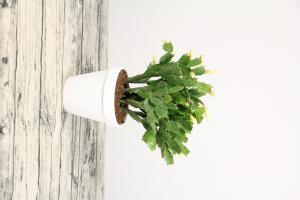Introduction
Tomatoes are a staple in many home gardens and can provide a bountiful harvest if properly cared for. One important aspect of caring for tomato plants is pruning, or trimming back the plant. Pruning helps the plant focus energy on producing fruits rather than excess leaves and branches. In this article, we will discuss how to trim back tomato plants.
Why Trim Back Tomato Plants?
There are several reasons why pruning tomato plants is beneficial. Firstly, pruning helps to promote growth and yield. By removing some of the excess leaves and branches, the plant is able to focus more energy on producing fruits. Additionally, pruning helps to improve air circulation and reduce the risk of disease. When leaves and branches are too dense, they can create a moist environment that is ideal for fungal growth. Pruning also helps to keep the plant looking neat and organized.
When to Trim Back Tomato Plants?
Tomato plants should be pruned throughout the growing season as needed. However, there are a few specific times when it is recommended to trim back the plant. The first is when the plant is young and just starting to grow. At this stage, it is important to remove any suckers, which are small shoots that grow in the crotch between the main stem and branches. Suckers take energy away from the main stem and can result in a weaker plant. When the plant is mature and has begun to produce fruit, it is recommended to lightly prune back any excess branches or leaves. Finally, toward the end of the growing season, it is recommended to remove any remaining fruit and foliage to promote ripening.
How to Trim Back Tomato Plants
1. Start by inspecting the plant and identifying any suckers or excess foliage that needs to be removed.
2. Using clean, sharp pruning shears, carefully cut away suckers and excess foliage. When removing suckers, make sure to cut them off as close to the main stem as possible.
3. When removing larger branches or leaves, make sure to cut them back to the main stem or a lateral branch. Be careful not to damage the main stem or other branches when making cuts.
4. If the plant is particularly dense, consider thinning out the interior by removing some of the lower leaves.
Tips for Trimming Back Tomato Plants
- Always use clean, sharp pruning shears to avoid damaging the plant.
- Be gentle when making cuts to avoid damaging the main stem or other branches.
- Don't go overboard with pruning. While it is important to remove excess foliage, too much pruning can weaken the plant.
- Regularly check the plant for new growth and adjust pruning as needed.
Conclusion
Trimming back tomato plants is an important aspect of caring for the plant and promoting growth and yield. By pruning away excess foliage and suckers, the plant is able to focus more energy on producing fruit. Regularly checking and adjusting pruning throughout the growing season is necessary for maintaining a healthy, strong plant. By following these tips, you can successfully trim back your tomato plants and enjoy a bountiful harvest.

 how many times do yo...
how many times do yo... how many planted tre...
how many planted tre... how many pine trees ...
how many pine trees ... how many pecan trees...
how many pecan trees... how many plants comp...
how many plants comp... how many plants can ...
how many plants can ... how many plants and ...
how many plants and ... how many pepper plan...
how many pepper plan...































